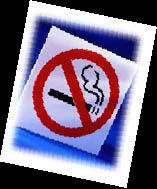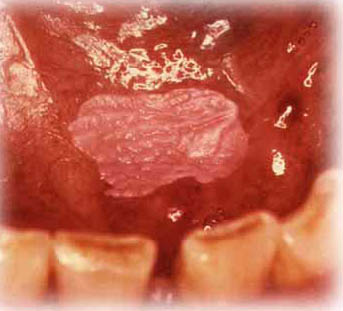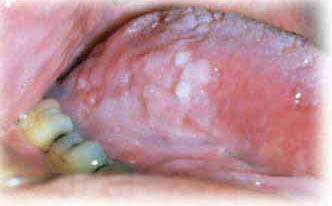Oral Health – Tobacco Use and Oral Cancer
Tobacco Use
Smoking cigarettes, cigars or pipes, or use of smokeless tobacco products increases the user’s risks of many cancers, including oral cancer.
Use of tobacco products can cause or contribute to a number of oral health conditions:
-
receding gums
- bleeding gums
- severe gum disease
- bad breath
- stained teeth and tongue
- reduced sense of taste and smell
- delayed healing after surgery
- Leukoplakia (white patches – can be an early sign of oral cancer)
- oral cancer
Solution: Quit smoking or using other tobacco products! Ask your dentist or physician about tobacco cessation programs and/or products.
Numerous other resources exist to help those who want to quit smoking:
-
The Quitline at 1-800-QUITNOW (784-8669). This is a free program and telephone counseling service to help guide individuals on quitting tobacco use. Guidance and assistance is personalized to each individual.
- Associations such as the American Cancer Society or American Lung Association have tobacco cessation programs or helpful information.
- For more information on tobacco use and cessation, visit the NetWellness page, Smoking & Tobacco.
Oral Cancer
The risk for oral cancer increases with age. The American Cancer Society (ACS) reports that more than half of oral cancer patients are 65 years of age or older – and that oral cancer is twice as likely in men as women. Primary risk factors for oral cancer are:
|
Tobacco use – An estimated 90 percent of oral cancer patients use tobacco. A smoker is six times more likely to develop oral cancer than a non-smoker. Smokeless tobacco users are at 50 times the risk of oral cancers of the cheek, gums and inner surface of the lips. Alcohol use – Over 75 percent of oral cancer patients drink alcohol more than occasionally. While heavy drinkers are at higher risk for oral cancer, both drinking and smoking can be a deadly combination. |
|
Signs of Oral Cancer
A dentist can often identify early signs of oral cancer or precancerous lesions. The American Dental Association provides the following information about oral cancer:
- Oral cancer often starts as a tiny, unnoticed white or red spot or sore anywhere in the mouth.
- It can affect any area of the oral cavity including the lips, gum tissue, cheek lining, tongue and the hard or soft palate.
Other signs of oral cancer can include:
|
|
Solution: There are simple precautions to take that can help reduce the risk for oral cancer:
- Don’t smoke, dip or chew.
- Drink alcohol in moderation.
- Protect the lips with lip balm with sunscreen .
- Eat plenty of fruits and vegetables.
- Regular dental examinations should include an oral cancer screening.
The National Institute for Dental and Craniofacial Research (NIDCR) states that most oral cancer is preventable and encourages making the oral cancer exam a routine part of the regular dental check-up. Like most cancers, early detection is the best cure. To find out if you are at risk for oral cancer, visit the NIDCR page.
Published with permission from Smiles For Seniors … an oral health initiative of the Ohio Dental Association.
For more information:
Go to the Dental and Oral Health (Seniors) health topic.


